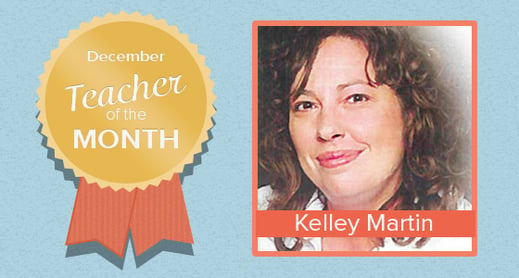
I had the opportunity to chat with Kelley Martin, a pre-K teacher at Weakley County Head Start in Tennessee. Her adminstrator, Mitzi Gilliam, noticed improvements in Kelley's CLASS knowledge.
Even after 21 years in the classroom Mitzi notes that Kelley "tries different things till she finds what works. She is proactive with her management techniques and open to new ideas."
I called Kelley and asked her about her interactions with students and her growth after being introduced to the CLASS tool.
What do you think the hardest part about teaching is?
Managing challenging behavior is tough. I’ve learned how important positive reinforcement is and that you need to keep these kids busy. Make sure they stay active and have something to do all the time. It’s also really important to allow the children to have a say in what happens in the classroom.
What are some of the most rewarding parts about teaching?
Getting to know the children and their families. And there aren’t any dull moments. My kids teach me something every day. They are fun and it’s amazing to see what these kids are capable of.
When did you first learn about the CLASS tool and how do you feel about it?
I was trained as part of my pre-service work. We’ve had a lot of trainings since then. The tool is challenging. When I first started learning about the tool, I really didn’t think I could do it.
What has helped you feel like you could “do CLASS”?
The more I work with the tool, the more I see how I can actually make a difference in my teaching. I have to practice all the time and change how I’m doing things as a teacher—and that’s hard. For example, I knew I needed to ask more questions of the children during my interactions and really focused on this. But my scores were still low. I thought I was doing a great job, but until we actually sat down and talked about what types of questions I had been and should have been asking, I didn’t get it. I had to retrain myself to think, “How can I ask this question so the kids can give me more information?” I was asking the questions, but not the right ones.
I read the manual and watch a lot of the videos so I can see what to actually look for and what that interaction might look like in a real classroom. The videos have been very helpful.
What differences have you noticed in your classroom since you’ve been focusing on these interactions?
The children are calmer. I don’t have to redirect them all the time. They are more in charge of how and what they learn and it’s fun to watch them think through solutions to everyday challenges. You can actually see them thinking “What do I need to do now?” And they know. Behavior management is much easier with the CLASS dimensions.
What other tools or tips have been helpful for you?
I always try to remember, you’re trying to help the children think a step ahead and a step higher. It’s not just about rote memory. And you have to practice as a teacher too. As a center, we came up with some tools to help us. We have questions posted around our classrooms to help us remember to ask deeper questions. We also do a lot of modeling for each other and observing each other. I work in a good center and work with great people and that helps!

